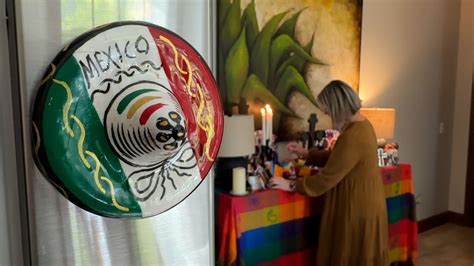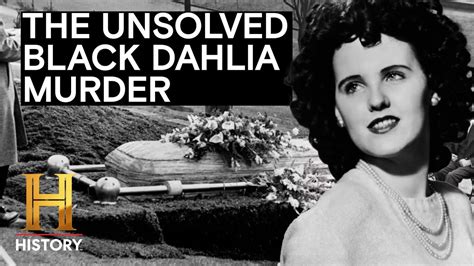As the sun sets on October 31st, families in Mexico and other parts of Latin America begin to prepare for one of the most meaningful and colorful celebrations of the year: Día de los Muertos, or Day of the Dead. This ancient tradition honors the lives of loved ones who have passed away, welcoming their spirits back into the world of the living for a brief, yet intimate, reunion. The festivities are a testament to the region’s rich cultural heritage, blending indigenous and Catholic traditions with a vibrant display of music, dance, food, and art.
At the heart of Día de los Muertos lies a profound respect for the cycle of life and death, recognizing that the souls of the departed continue to play an active role in the lives of their families and communities. Over the course of two days - November 1st, which honors children and infants, and November 2nd, dedicated to adults - families come together to pay tribute to their ancestors, traditions that have been passed down through generations.
1. Altar Construction
The centerpiece of any Día de los Muertos celebration is the construction of an altar, known as an ofrenda, in the home. This elaborate structure is adorned with a multitude of items, each holding significant meaning. Photographs of loved ones are prominently displayed, alongside favorite foods, drinks, flowers - particularly marigolds, which are believed to guide the spirits back to their altars - and personal belongings. The altar serves as a beacon, welcoming the spirits into the home and providing them with comfort and nourishment during their visit.
2. Traditional Foods and Drinks
Preparations for Día de los Muertos include cooking a variety of traditional dishes that the deceased enjoyed during their lifetime. Pan de muerto, a sweet bread, and mole, a rich, complex sauce served over chicken or pork, are staples of the celebration. Beverages such as atole, a warm, milky drink, and fresh fruit juices are also offered to the spirits. The belief is that the spirits consume the essence of these offerings, leaving behind the physical form for the living to enjoy.
3. Marigold Paths
One of the most iconic and visually striking aspects of Día de los Muertos is the use of marigolds. Petals from these bright orange flowers are used to create pathways leading from the cemetery to the home, guiding the spirits back to their altars. This tradition is rooted in the belief that the strong scent and vibrant color of marigolds can awaken the souls and draw them to the offerings prepared for them.
4. Visits to Cemeteries
Families often spend the evening of Día de los Muertos in cemeteries, where they clean and decorate the graves of their loved ones with flowers, candles, and other offerings. The atmosphere is festive, with music, food, and conversations about the deceased, celebrating their lives rather than mourning their passing. This communal aspect of the celebration underscores the importance of community and family in Mexican culture.
5. Skull Art and Symbolism
The sugar skull, or alfeñique, is a symbol closely associated with Día de los Muertos. These colorful skulls, often decorated with the name of the deceased, are placed on altars and are believed to represent the souls of the dead. The use of skulls in this context serves as a reminder of the inevitability of death and the cycle of life, rather than a morbid fascination with mortality.
6. Candlelight
Candles play a significant role in Día de los Muertos, providing light for the spirits to find their way back to their families. The soft glow of candlelight also adds to the warm and welcoming ambiance of the altars and cemeteries, symbolizing the love and warmth that guides the spirits on their journey.
7. Music and Dance
The evenings of Día de los Muertos are filled with music and dance, as families and communities come together to celebrate the lives of their loved ones. Traditional dances, such as the Danza de los Viejitos, and lively music, including the use of marimbas and guitars, create a festive atmosphere that honors the deceased and celebrates the continuation of life.
8. Paper Decorations
Paper banners and decorations, known as papel picado, are hung in homes and along streets. These vibrant, intricately cut papers add to the festive atmosphere and are believed to symbolize the fragility of life. The act of creating these decorations is often a communal activity, bringing families and friends closer together as they prepare for the celebration.
9. Stories and Anecdotes
Sharing stories and anecdotes about the deceased is an integral part of Día de los Muertos. Families gather to reminisce about their loved ones, sharing laughter and tears as they recount memories of times past. This oral tradition serves as a way to keep the memory of the deceased alive, ensuring their legacy lives on through generations.
10. Respect and Remembrance
At the core of Día de los Muertos is the belief that death is not an end, but rather a transformation. The celebration is a testament to the enduring bond between the living and the dead, with the deceased playing an active, albeit spiritual, role in the lives of their families. This profound respect for the deceased and the tradition itself underscores the significance of Día de los Muertos, not just as a celebration, but as a way of life.
Conclusion
Día de los Muertos is more than a holiday; it is a vibrant tapestry of traditions, beliefs, and cultural practices that come together to honor the cycle of life and death. Through its unique blend of festivities, this celebration reminds us of the importance of honoring our ancestors, respecting the cycle of life, and finding joy and meaning in the shared experiences of our communities. As we embrace the beauty and richness of Día de los Muertos, we are reminded of the universal human desire to connect with what has come before us and to find ways to keep the memories of our loved ones alive.
Frequently Asked Questions

What is the significance of Día de los Muertos?
+Día de los Muertos, or Day of the Dead, is a celebration that honors the lives of loved ones who have passed away, recognizing the cycle of life and death and the connection between the living and the deceased.
How do people typically celebrate Día de los Muertos?
+The celebration involves constructing altars in homes, decorating them with photographs, favorite foods, drinks, and personal belongings of the deceased. Families also visit cemeteries, decorate graves, and engage in traditional activities like cooking specific dishes, creating marigold paths, and sharing stories of the deceased.
What role do marigolds play in Día de los Muertos?
+Marigolds are used to create paths leading from the cemetery to the home, guiding the spirits back to their altars. The strong scent and vibrant color of marigolds are believed to awaken the souls and draw them to the offerings prepared for them.
How does Día de los Muertos reflect the cultural values of the communities that celebrate it?
+Día de los Muertos reflects the cultural values of respect, remembrance, and the importance of family and community. It shows how these communities honor their ancestors and believe in the continuation of life beyond death, highlighting the strength of their cultural heritage and traditions.



